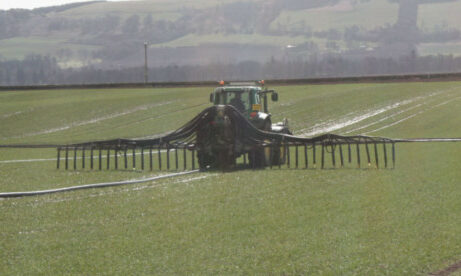Richard Lochhead made a good choice of venue to launch his new Dairy Action Plan.
The Taylor family father Willie and his sons William, 45, and James, 41 are in their own words “completely committed” to dairying.
From their base at Baldoukie near Tannadice they farm 1,200 acres and carry 280 cows, with 250 milking at any one time.
They also have a 100-strong Limousin-sired suckler herd with all replacements home-bred, many of them from dairy crosses. The pure Holstein dairy herd yields around 9,000 litres per head at 4% butterfat, and 3.25% to 3.3% protein.
“We have made the investment and the commitment and we will stay with dairying,” said William.
“The biggest problem is supermarket control of prices. We are on a Wiseman standard contract which is currently paying 24p per litre with no seasonality.”
As a reaction to lower prices, the Taylors have modified the cows’ ration to include less purchased protein. Their own grass silage is supplemented by draff from the distillery at Brechin, and brock potatoes sourced locally.
Recent investments include a 24/24 herringbone parlour installed in 2008, and a new cubicle shed and slurry store built more recently with the help of a Scottish Rural Development Programme grant.
The new slurry store was a fortuitous investment, with the Tannadice area now designated for the first time as a Nitrogen Vulnerable Zone (NVZ).
This brings new restrictions and, as William and James acknowledge, a greater need for accurate record keeping.
It also means close attention has to be paid to slurry handling, and this is where the new store is proving vital. Holding one million gallons, it provides enough storage for seven months, allowing the brothers to avoid closed periods for application.
They have also moved to applying the slurry to grass and crops via an umbilical system, with the material pumped to a tractor-mounted boom applicator.
The result is reduced odour, less tracking of the fields and more accurate application rates.
On Tuesday a contractor was at work applying 3,000 gallons per acre to a winter wheat crop. “It is working well for us, and of course it is reducing the amount of bagged fertiliser we have to buy in,” said James.
